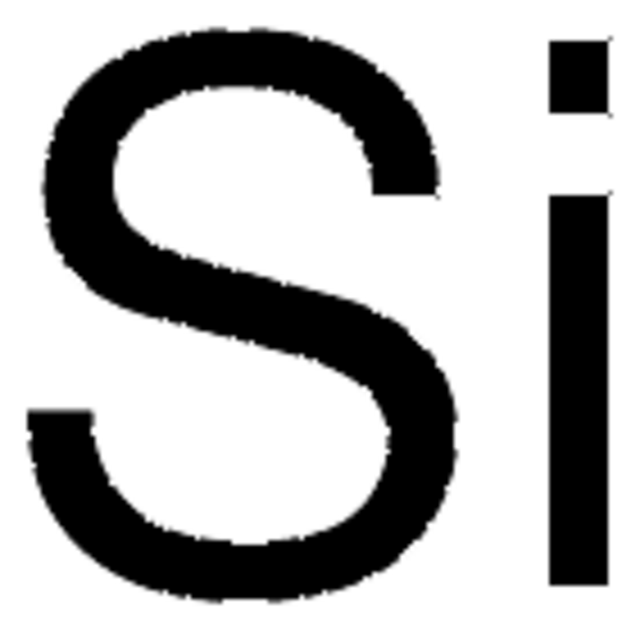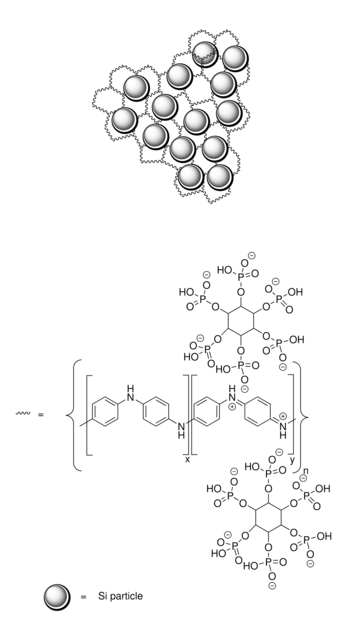Kluczowe dokumenty
633097
Silicon
nanopowder, <100 nm particle size (TEM), ≥98% trace metals basis
Synonim(y):
Silicon anode material
About This Item
Polecane produkty
Poziom jakości
Próba
≥98% trace metals basis
Formularz
nanopowder
wielkość cząstki
<100 nm (TEM)
bp
2355 °C (lit.)
mp
1410 °C (lit.)
gęstość
2.33 g/mL at 25 °C (lit.)
ciąg SMILES
[Si]
InChI
1S/Si
Klucz InChI
XUIMIQQOPSSXEZ-UHFFFAOYSA-N
Szukasz podobnych produktów? Odwiedź Przewodnik dotyczący porównywania produktów
Powiązane kategorie
Opis ogólny
Zastosowanie
Cechy i korzyści
- Superior Dispersion
- High Specific Surface Area
- Improved Mechanical Stability
- Enhanced Performance
Hasło ostrzegawcze
Warning
Zwroty wskazujące rodzaj zagrożenia
Zwroty wskazujące środki ostrożności
Klasyfikacja zagrożeń
Flam. Sol. 2
Kod klasy składowania
4.1B - Flammable solid hazardous materials
Klasa zagrożenia wodnego (WGK)
WGK 3
Temperatura zapłonu (°F)
Not applicable
Temperatura zapłonu (°C)
Not applicable
Środki ochrony indywidualnej
Eyeshields, Gloves, type N95 (US)
Wybierz jedną z najnowszych wersji:
Masz już ten produkt?
Dokumenty związane z niedawno zakupionymi produktami zostały zamieszczone w Bibliotece dokumentów.
Klienci oglądali również te produkty
Produkty
Hydrogen is one of the most important resources in providing food, fuel, and chemical products for our everyday life. Sustainable catalytic hydrogen production from bioethanol has gained significant attention in recent years due to globally diminishing fossil fuel supplies, which have necessitated the search for new chemical feedstocks.
Recent demand for electric and hybrid vehicles, coupled with a reduction in prices, has caused lithium-ion batteries (LIBs) to become an increasingly popular form of rechargeable battery technology.
Niedawny popyt na pojazdy elektryczne i hybrydowe, w połączeniu z obniżką cen, spowodował, że akumulatory litowo-jonowe (LIB) stały się coraz bardziej popularną formą technologii akumulatorów.
Silica is a very popular inorganic nanomaterial used in a wide range of applications including fillers for rubber, catalyst supports, separation media, carriers in food and agriculture, and abrasive/anticaking agents in cosmetics. It is also widely believed to be an important material for biomedical applications for following reasons.
Nasz zespół naukowców ma doświadczenie we wszystkich obszarach badań, w tym w naukach przyrodniczych, materiałoznawstwie, syntezie chemicznej, chromatografii, analityce i wielu innych dziedzinach.
Skontaktuj się z zespołem ds. pomocy technicznej


